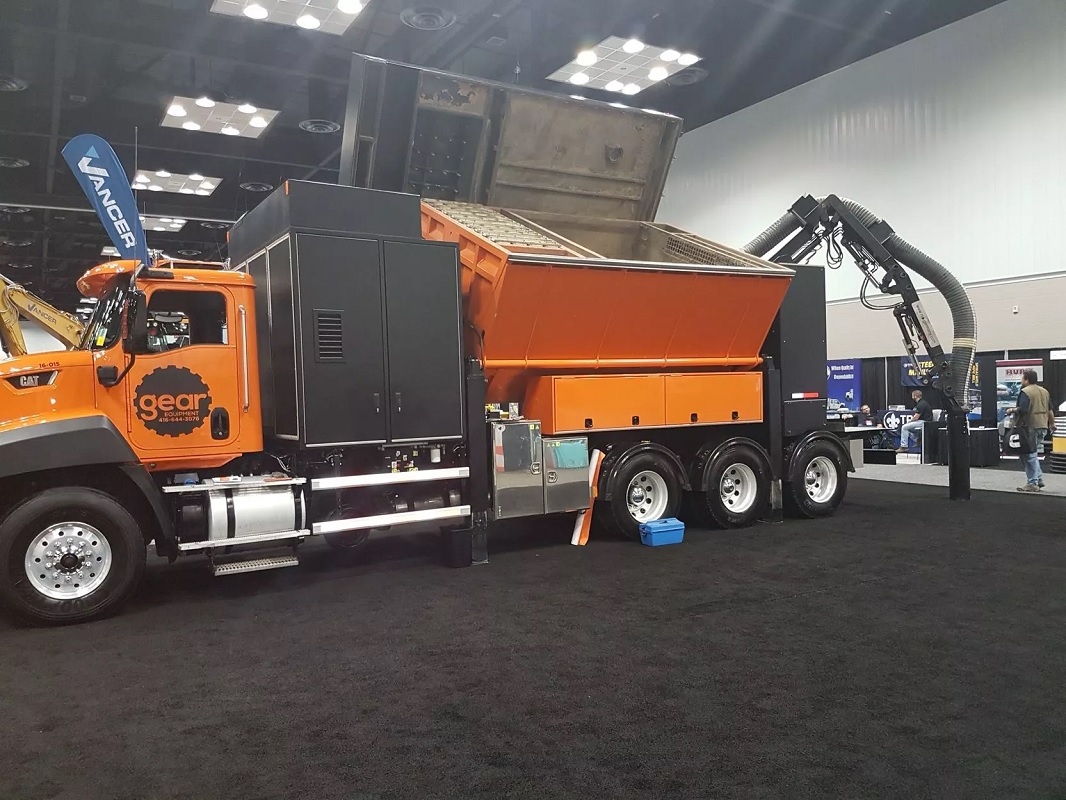Table of Contents
Excavation is the process of removing earth and excavating soil to create a space for construction or to gain access to buried objects. Excavation can be manual, mechanical, hydraulic, or pneumatic. It can also be done with robots. These tools are used in excavation:
Excavator: This is the basic equipment used in excavation that can dig a trench and lift excavated materials. The excavator can have attachments like buckets, pumps, and winches. A TBM (traversing bucket machine) can also be attached for digging tunnels. Different types of excavators include wheeled excavators, tracked excavators, and front-end loaders. Bucket nose loaders are also used for loading materials into a bucket loader. Trenchers are bucket loaders that can dig larger trenches than a dozer can.
Shredder: This machine removes large rocks and boulders from excavations using rotating blades or an abrasive belt. Shredders can be manually operated or hydraulically driven. Hydraulic options are often more expensive but require less maintenance when they become clogged with sediment or mud. Hydraulic shredders need to be flushed or hydro-tested every six months while hydraulic shovels only need flushing after heavy use. Hydraulic shredders can be equipped with attachments such as rippers, hammers, and blade breakers for excavation purposes as well as some for grading purposes such as roll-off trucks and drybox roll-off trucks (DRTO). Rotary drum rotary shavers have been used in mining applications due to their ability to remove material quickly and easily.
Dozer: This tractor-like machine is used for heavy excavation and canhoeing. It has a large bulldozer blade on the front that digs through soil and rocks. The dozer can be equipped with attachments such as a dump truck, loader, or excavator. A tracked dozer is also available that has tracks instead of wheels to help it move through difficult terrain.
Overview of excavating gear
When it comes to excavating, selecting the right gear equipment is essential for safe and efficient excavation. Before making a decision, consider the type of soil and rock you are working with. Also, consider the type of excavation you are planning to do, such as digging trenches or deeper holes. Different types of excavators can handle different tasks, so make sure to choose an excavator suited for the job at hand.
When choosing gear equipment, make sure to equip your excavator with the appropriate gears for the job. This will ensure your excavation is safe and efficient. Always use safety precautions when excavating and follow all safety protocols provided by your supervisor and operator.
Types of excavating gear
There are a variety of different excavating gear types available for use, each with their own unique features and benefits. Most commonly used types include backhoe, compact steerable bucket truck, rotary trencher, front-end loader and crane. Each of these has its own strengths and weaknesses and can be used for various excavation projects depending on the size, scope, and complexity of the project.
A backhoe is a powerful piece of equipment that can be used to dig large holes in the ground quickly and efficiently. It can handle various types of soil and terrain, making it an ideal choice for excavation projects of all sizes.
A compact steerable bucket truck is another popular type of excavating gear. This device can easily navigate narrow spaces, making it an efficient choice for many excavation projects. It can also handle heavy loads with relative ease, making it an excellent choice for digging large holes in the ground.
Rotary trenchers are also popular among excavationists. They can easily break up large rocks or boulders without damaging the surrounding soil or rock layers. This makes them a versatile option for any excavation projects that involve breaking up large objects.
A front-end loader is another popular type of excavating gear. This piece of equipment is capable of handling multiple tasks with ease, making it an excellent choice for excavation projects of all sizes and complexities.
What to consider when purchasing excavating gear?
It’s important to consider the various features of excavating gear when purchasing it. This includes the power and type of engine that the excavating gear is equipped with, the size, weight, and power of the excavating gear, the number and kind of wheels on the excavating gear, the bucket, claw, or arm assembly for the excavating gear, and whether or not it is equipped with a backhoe or a front-end loader. By paying attention to these details, you can ensure that you purchase an efficient and reliable excavator capable of handling your excavation project.
How to use excavating gear?
Before you can use excavating equipment, you must understand the different types of gear available. The main types include wheeled excavators, trenchers, shovels, buckets, and augers. Each type has its own strengths and weaknesses.
It’s important to choose the type of gear that is best suited for the job at hand. Shredded earth can be a powerful environmental weapon, but it can also damage soil and cause erosion. Likewise, trenchers can help break up hard ground, but they can also damage it and cause erosion.
When using an excavator, it’s vital to assess the condition of the soil and bedrock before starting excavation. This will help ensure safe operation and avoid damaging the environment or your project site. It’s also essential to wear safety gear, including a helmet and eye protection. This will help prevent injuries and preserve vision while ensuring optimal performance from your equipment. Finally, you should clean and lubricate the equipment regularly to ensure optimal performance and efficiency.
How to maintain excavating gear?
It’s vital to inspect excavating equipment regularly for damage, wear, and tear. This keeps the equipment in optimal condition and helps avoid costly repairs. When operating excavating equipment, make sure you’re wearing protective gear such as gloves, safety glasses, and a helmet. Also, make sure you’re using the proper size equipment for the job and that it’s properly tuned and maintained. To clean and lubricate excavating equipment as necessary, follow the manufacturer’s instructions. Also, be sure to store it in a dry and safe place away from direct sunlight. Additionally, consult the specific care and maintenance instructions provided by the manufacturer for your excavating equipment. Follow these steps to operate excavating equipment safely in wet or icy conditions.
What are the benefits of using excavating gear?
– Excavating with the right equipment can minimize the damage caused to your property. Equipment can be customized to fit your specific needs, making it more cost-effective and efficient.
– Gear can be used in a variety of weather conditions, including hot and dry conditions. This makes it ideal for use on residential properties, farms, and other areas where the environment can vary greatly.
– Gear can be rented or purchased in bulk, making it cost-effective. This allows you to quickly scale up your excavation project without having to spend too much money on equipment that may not be needed.
Overall, excavating with the right equipment can save you time and money while ensuring minimal impact on your property.
What are some factors to consider when choosing the right gear equipment for my excavation needs?
When choosing the right gear for your excavation needs, there are many factors to consider. Consider the type of soil you are working on, the climate where you are located, and your experience level when selecting equipment.
gear that is appropriate for soft soil may not be appropriate for hard soil. Gear can also be heavy and difficult to lift, making it a challenge to move around. For this reason, it is important to research what type of gear is suitable for the type of soil you are working on before making a purchase.
Additionally, consider the weight and size of the equipment you will be using. Equipment that is too heavy or bulky can be challenging to move and can cause injuries. It is also important to make sure that equipment is comfortable and easy to use.
How do I choose between different types of gear equipment?
When choosing gear equipment for excavation, it is important to first consider your excavation needs. Gear equipment can be classified into two categories: mechanical and hydraulic.
Mechanical gear equipment includes diggers and bulldozers. These are typically used for digging large trenches or holes in the ground. Draglines, frontloaders, backloaders, and excavators can be used for heavy-lifting and clearing large sites.
It is important to select the appropriate gear equipment for the task at hand. For example, if you need to clear a large area of land, then a dragline may be the best equipment for the job. However, if you only need to dig small trenches, then a digger or bulldozer may be more appropriate.
Gear equipment can be expensive, so it is important to choose the right type for the job. For example, a dragline will be much heavier and require more power than a digger or bulldozer. Additionally, gear equipment can have a limited operating range. So, it is important to consider factors such as weight, power, and operating range whenever choosing gear equipment.
We hope this article has helped you make an informed decision on which excavating equipment to purchase and how to use it efficiently. Remember, the right equipment can help you get the job done faster and safer. When selecting excavating equipment, ensure that it is made of high-quality material and is designed for safe working conditions. It is also important to maintain the safety of your workers while using it.










